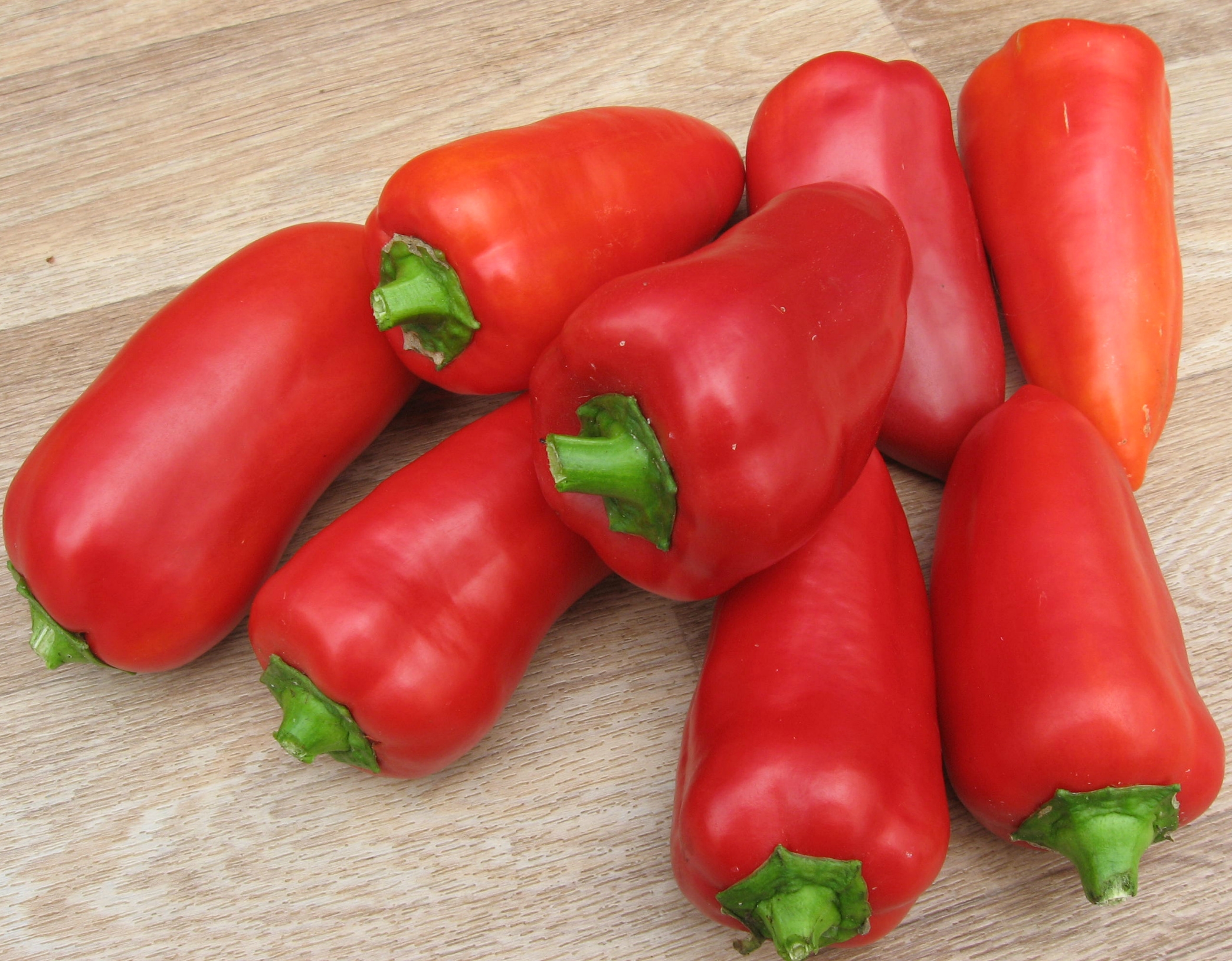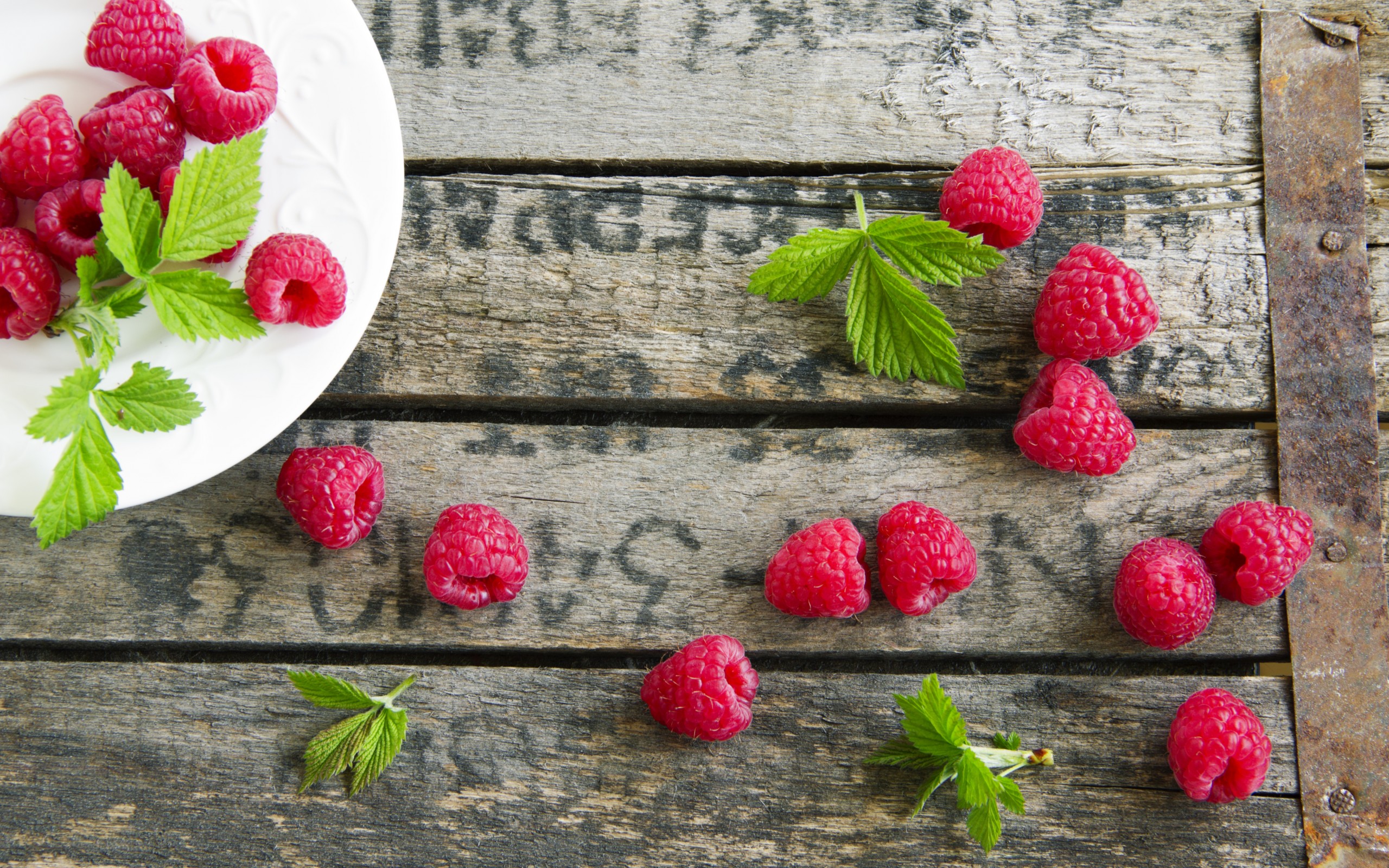Sweet and tasty peppers are not only a good addition to various dishes, but are themselves a healthy and vitamin vegetable. It is known that it first appeared in Central America, and then gradually began to spread throughout the Earth.
Bell peppers are believed to belong to the nightshade family. Pepper in Russia due to weather conditions first planted in a greenhouse, but only in summer, seedlings are planted in open ground. Breeders have worked hard to create such varieties of sweet peppers that will be adapted to different temperature fluctuations, and also did not forget to work a little on so that the color of such a vegetable was the most diverse: yellow, dark red, green, purple. The shape of such a sweet vegetable is also diverse: large, cone-shaped, small, similar to tomatoes, pyramidal and others.
Content
Growing sweet peppers
Sowing of sweet pepper seeds begins in February or March, but they are planted specifically for seedlings. Seeds of this vegetable crop usually take a long time to sproutand it may take 15 to 20 days. Of course, germination can be accelerated by using a special aloe infusion. Its method is very simple: aloe juice is poured with the same amount of water, and then the seeds are soaked in it for several days.
Unlike other vegetable crops that are grown from seedlings, 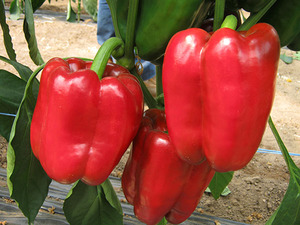 no need to dive the plant... And it can be transplanted into the ground only when good sunny weather is established, for example, at least 20 or 25 degrees. But if the temperature turns out to be much higher, then, accordingly, the bell peppers must be watered. If the heat is above 40 degrees, then the roots will begin to die off, the ovaries and flowers will quickly dry out, and the plant itself will simply wither.
no need to dive the plant... And it can be transplanted into the ground only when good sunny weather is established, for example, at least 20 or 25 degrees. But if the temperature turns out to be much higher, then, accordingly, the bell peppers must be watered. If the heat is above 40 degrees, then the roots will begin to die off, the ovaries and flowers will quickly dry out, and the plant itself will simply wither.
Almost all sweet peppers are known to grow well under the following conditions:
- Plots with good sunlight.
- Areas with good soil that is rich in nitrogen and fertile.
If the pepper is planted in the shade, then it will simply stretch up, but the fruits will practically not grow.
Taking care of pepper is simple: you need to weed it, ridding the site of weeds, water abundantly and be sure to loosen. During watering, it is necessary to feed this vegetable plant. Bird droppings are used as top dressing, which must be diluted with water. The recipe for feeding is as follows: for 1 bucket of water, no more than one glass of bird droppings is taken.
Thick-walled sweet peppers for open ground
For salad peppers an important quality is the wall thickness of the vegetable... The following varieties are considered the best types of large peppers, having thick and fleshy walls:
- American giant.
- California miracle.
- Bel Goy.
- Carlos.
- Ilyusha.
- Baron.
- Golden miracle.
- Fat man.
- Siberian format.
 Anastasia.
Anastasia.- Red giant.
- Bovine ear.
- Mastodon.
- Italian boot.
- Shorokshary.
- The sun of Italy.
All these varieties have excellent taste and, if properly stored, can retain their freshness until the New Year. But these same varieties are great for using them in canning, for example, lecho or other winter salads.
Thick-walled sweet pepper varieties for the Moscow region
Bell pepper rich in minerals and vitaminsthat are contained in its pulp. They have a positive effect on the human body, giving strength and possessing some healing properties. And this is the main argument in order to learn how to grow this vegetable crop in different types of beds: open and closed. But in order for this heat-loving plant to have an excellent harvest, it is necessary not only to invest a little money, but to have both knowledge and patience, gaining precious experience in growing.
Today summer residents can boast of a large selection of varieties Moscow region. All the sweet pepper varieties they grow differ in shape, color, and even weight. Among all types of sweet thick-walled peppers for the beds of the Moscow region, the following varieties can be distinguished:
- Fidelio. Summer residents like this variety very much for its golden-white color and large fruits. This type of pepper begins to ripen 90 days after germination.
- Orange miracle. Its color is bright orange, and the weight of one fruit can reach 250 grams.
- Rhapsody. Fruits of different colors, but unpretentious, and very resistant to various diseases.
 Winnie the Pooh. High yield with multi-colored fruit and long-term storage.
Winnie the Pooh. High yield with multi-colored fruit and long-term storage.- Semko and Agapovsky are the best sweet peppers that are ideal for growing in greenhouses. The fruits of this species are distinguished by excellent taste and beautiful fruit color. They can be served to diversify and decorate dishes.
- The Atlantic variety has fleshy fruits, the shape of which is elongated. Perfectly adaptable for cultivation both outdoors and indoors.
Besides these varieties, the following types are popular in the Moscow region pepper: Gift of Moldova, Volzhanin, Golden rain and others. Of course, the fruits of these varieties are slightly smaller in size, but they still retain their taste and bright color.
Of course, there are a huge number of varieties for growing in the beds, and therefore each summer resident can eventually decide for himself what kind of pepper is suitable for growing.
Popular varieties of pepper
Sweet bell pepper a huge number of taste characteristics... This allowed this vegetable culture to win the attention of many people, despite their gastronomic preferences.
There are several types of sweet peppers, each of which also has its own varieties. The main types of sweet peppers are:
- Early ripe
- Mid-season
- Late ripening
Let us dwell in more detail on each of this species. So, the first type is the early varieties of sweet peppers. These include:
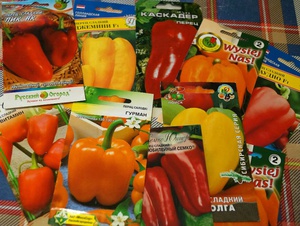 Claudio F1 is an early variety that emerges within 72–85 days.
Claudio F1 is an early variety that emerges within 72–85 days.- Seville (95 days).
- Orange miracle (100-110 days).
- Montero (125 days).
- Ilya Muromets (125 days).
- Ivanhoe (105-110 days).
The second type is mid-season peppers. These include:
- A California miracle, ripening for 130 days. But it is worth considering that this species does not like a large amount of fertilizers, especially with nitrogen. If you use it, then the bush turns out to be tall, but there will be few fruits on it.
- Yellow bull and Red bull. These varieties are good because they are resistant to various viruses. Their fruits are usually large, fleshy and juicy. From one square meter of land planted with these varieties, you can harvest up to 7 kilograms of crops.
To such mid-season sweet bell peppers other species that tolerate dry weather well can be attributed. These are such varieties as Veronica, Anastasia, Red giant, Kolobok and others.
The third type is late-ripening pepper varieties. To grow them southern areas work well, as, however, and for mid-season and early varieties. But they can be grown in regions where it is cold, then only in greenhouses. Late-ripening varieties include the following types:
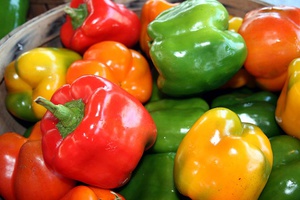 Gladiator, considered a high-yielding variety, originated in Holland. The fruits of this variety are usually pyramidal in shape, yellow in color and heavy, which can reach 350 grams.
Gladiator, considered a high-yielding variety, originated in Holland. The fruits of this variety are usually pyramidal in shape, yellow in color and heavy, which can reach 350 grams.- Aristotle ex 3 p f 1. This variety is resistant to many diseases of this vegetable, and the fruits themselves resemble a cylinder. If the fruit is well ripe, then it has a red color. This is the variety that belongs to the thick-walled, and the weight of the fruit reaches 200 grams. This pepper is very easy to transport, it will remain as if it was recently plucked from the garden.
- The Black Cardinal is a variety that originated in Italy. Its fruits have a truncated pyramid shape, their color is black, but may also be red. Ripe fruits have a juicy pulp.
- Bell. This variety of bell pepper got its name because of its shape, which resembles a bell flower. But on the other hand, these amazing fruits have an unusual sweet and sour taste. It is believed that this variety can be attributed to perennial vegetable crops, so for the winter it is better to transplant it into some kind of bowl or other container and it is advisable to store it in a place where there is good lighting. The fruits of this variety ripen within 150 days, and the yield sometimes reaches 2 kilograms from this bush.
How to choose a variety?
There are several rules for choosing a pepper variety. So, first of all worth watching not on the appearance of the fruit and not even on their size, but on the conditions under which it can be grown. For example, this is open ground or a greenhouse.
When buying seeds, you always need to study the packaging, where it must be indicated in what conditions this variety of pepper can be grown.
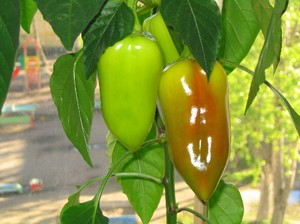 Knowing what types of sweet peppers are there, it is possible to plant this plant on the same bed of different ripening periods: early, middle and late. This will help keep peppers fresh throughout the summer. And if the variety is late ripening, then you can generally plant it in a pot and grow it on the windowsills. Then the fruits will be until the middle of the winter period.
Knowing what types of sweet peppers are there, it is possible to plant this plant on the same bed of different ripening periods: early, middle and late. This will help keep peppers fresh throughout the summer. And if the variety is late ripening, then you can generally plant it in a pot and grow it on the windowsills. Then the fruits will be until the middle of the winter period.
Worth pay attention when buying and what is the height of the bushes... This is especially necessary for those summer residents who grow peppers in greenhouses or the area of the site is strictly limited. Then it is worth buying only undersized varieties of sweet peppers.
Recently popular began to use hybrid varieties of pepperthat are considered to be more resistant to disease. By the way, varieties of pepper have already been developed that perfectly tolerate various weather conditions: drought, cool or rainy weather.
And of course, when purchasing pepper seeds, you should pay attention to the light mode indicated on the package.
Pests and diseases of sweet pepper
Pepper can be susceptible to many diseases... For example, verticillosis or stolbur. The first disease is caused by a fungus that lives either in the soil or in the roots of plants. There are several forms of diseases and their symptoms depend on this. To eradicate this disease on the site, it is necessary to completely remove diseased plants.
The second disease is stolbur or phytoplasmosis. This disease is manifested by leaf rolling., and the fruits become small, and it is simply impossible to eat them. To get rid of this disease, chemical intervention (spraying) is necessary.
Pests of pepper bushes are spider mites, aphids, Colorado beetles and naked slugs. To get rid of them, it is required to spray the bushes with pesticides.
If on time carry out all the necessary measures to combat diseases and pests, then you can get not only healthy pepper bushes, but also a good harvest. If you choose the right variety of pepper for your summer cottage, grow it, observing all the rules, then very soon you can get tasty, beautiful and healthy fruits.

